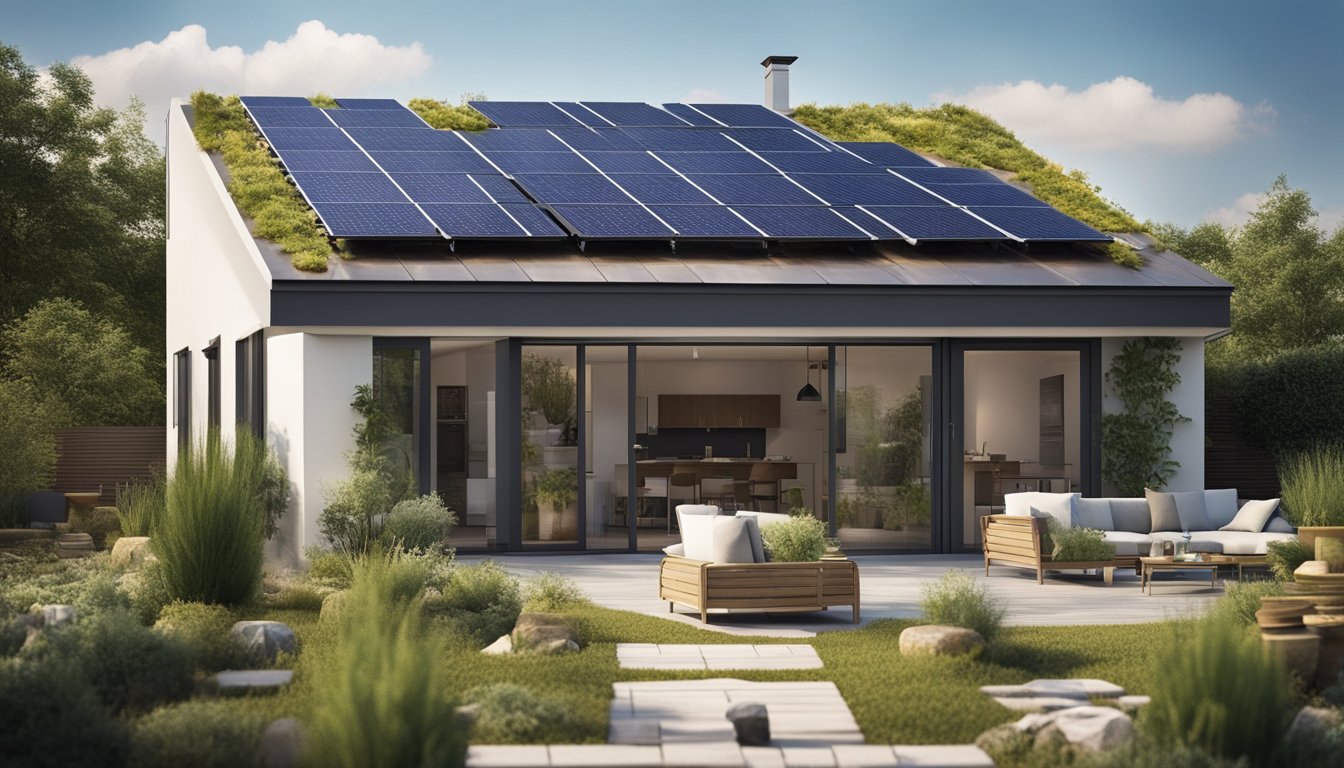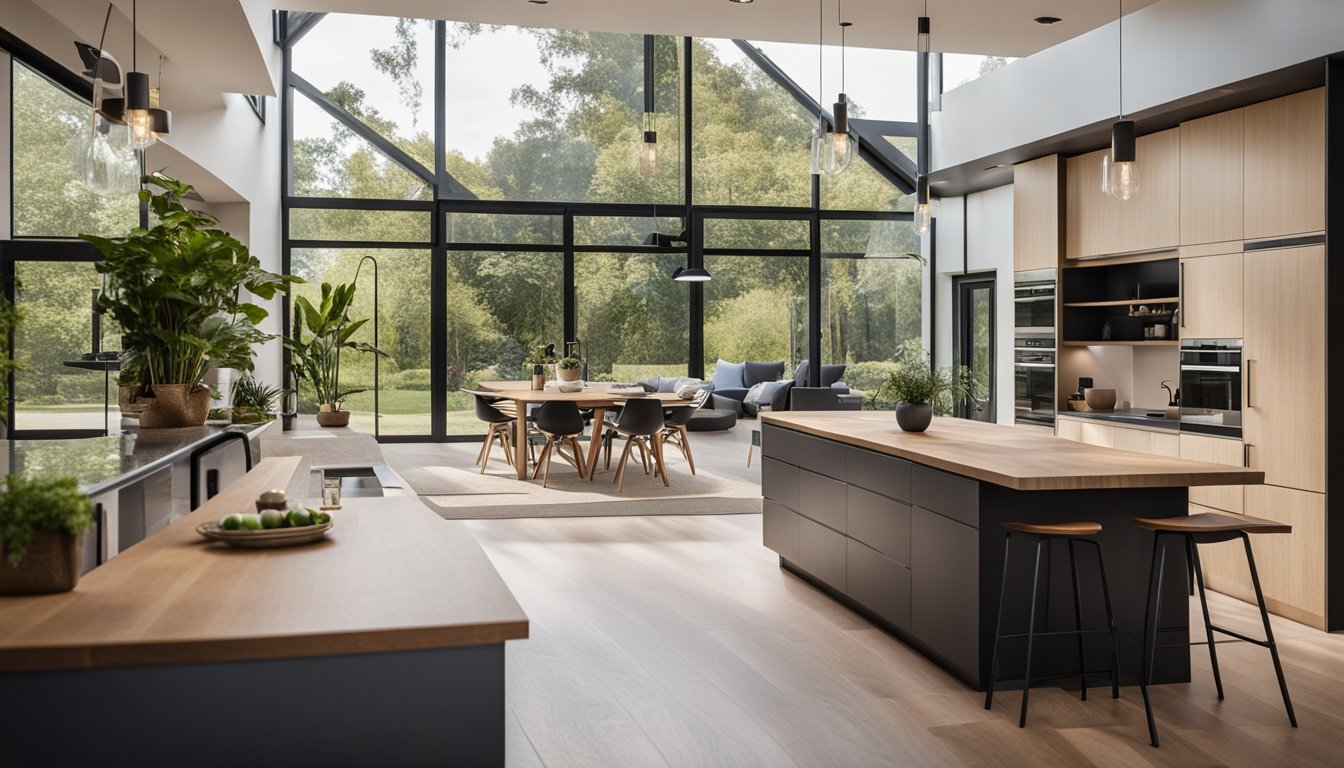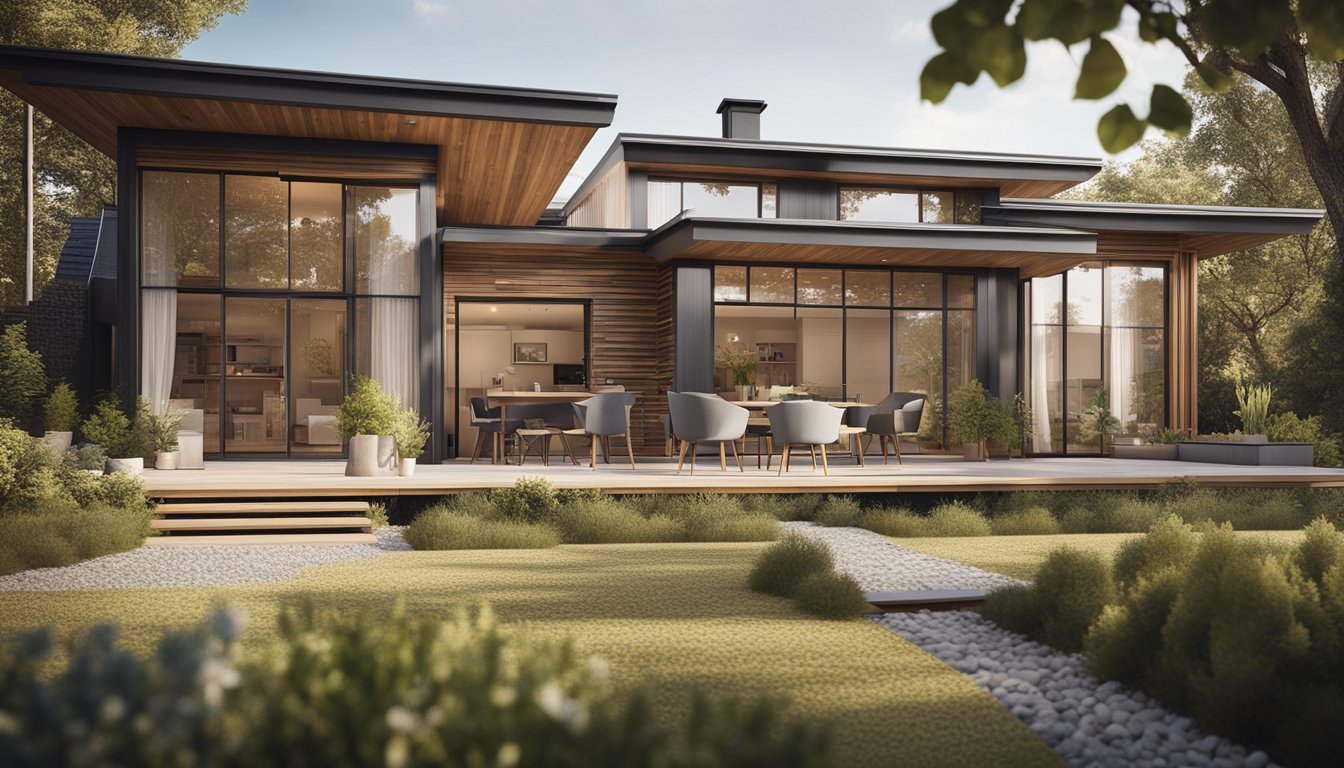Late updated: 12 Nov 2024 09:11
Written by: Daniel Harper
Top Trends For Sustainable Home Renovation In 2024: Innovations and Insights
For many homeowners, 2024 is shaping up to be a pivotal year in sustainable home renovation. As we become more aware of the environmental impact of our living spaces, the demand for green and eco-friendly upgrades is increasing. Sustainable and eco-friendly materials, such as bamboo, recycled glass, and cork, are taking centre stage, offering both aesthetic appeal and reduced carbon footprints.

Embracing these innovative materials is only part of the equation. Technological advancements are making it easier for us to incorporate eco-friendly solutions seamlessly into our homes. From multi-functional appliances that optimise space to designs that merge beauty with functionality, homeowners are redefining what it means to live sustainably.
As you explore your options for a greener home this year, consider how these trends can transform not only your environment but also your lifestyle. Let’s delve deeper into the exciting possibilities that await in home renovation this year.
Key Takeaways
- Sustainable materials reduce environmental impact.
- Tech innovations enhance eco-friendly designs.
- Multi-functional spaces are increasingly popular.
Eco-Friendly Materials and Technologies
In 2024, sustainable home renovation is being transformed by advanced materials and innovative technologies. By integrating these solutions, we can reduce our environmental impact and enhance our home's energy efficiency.
Harnessing Solar Energy
Solar energy continues to lead the way in eco-friendly home power solutions. With improvements in solar panel efficiency and affordability, more households are turning to this renewable resource. Solar panels capture sunlight, converting it into electricity that can power our homes. This technology not only cuts electricity bills but also decreases dependence on non-renewable energy sources.
Innovations such as solar roof tiles further integrate solar power into home design, maintaining aesthetic appeal while providing functionality. These tiles seamlessly blend into roofing, making them an attractive option for those concerned about visual impact. As we continue to embrace solar energy, our reliance on sustainable power solutions grows, making significant environmental and economic impacts.
Sustainable Insulation Solutions
Effective insulation is fundamental to reducing energy consumption and maintaining a comfortable indoor environment. Traditional materials are increasingly being replaced by eco-friendly options like wool, cellulose, and recycled cotton. These materials offer excellent thermal insulation while being environmentally responsible.
Wool insulation, derived from a sustainable source, provides natural insulating properties and breathability. Cellulose insulation, made from recycled paper, is another popular choice, offering significant energy savings. Its ability to fit into tight spaces reduces heat loss and improves energy efficiency. By adopting these sustainable insulation solutions, we enhance our home's thermal performance and minimise our carbon footprint.
Innovations in Smart Home Systems
Smart home technology plays a pivotal role in modern eco-friendly renovations, enabling us to monitor and manage energy usage effectively. Energy-efficient appliances are now paired with smart systems, allowing precise control to optimise efficiency. Smart thermostats adjust heating based on occupancy and preferences, reducing unnecessary energy use.
Automated lighting systems further enhance energy efficiency. These systems ensure lights are used only when needed by detecting when rooms are empty. This technology, combined with energy-efficient bulbs, can substantially lower energy consumption. By embracing smart home innovations, we not only improve convenience but also advance our commitment to sustainability, balancing technology with eco-friendly living.
Designing Multi-Functional and Aesthetic Spaces

In our pursuit of sustainable home renovation, creating spaces that marry functionality with beauty is paramount. We emphasise elements such as optimising natural light and extending living areas outdoors to enhance both the visual appeal and utility of our homes.
Focusing on Natural Light and Space
Natural light plays a pivotal role in breathing life into living spaces. By implementing large windows, skylights, and open floor plans, we can maximise the influx of sunlight, which reduces the need for artificial lighting and energy consumption. These elements also foster a sense of quiet luxury and timeless style, where simplicity meets elegance.
Moreover, integrating bold colours within these spaces can create vibrant contrasts against the natural lighting, adding a dynamic yet cohesive aesthetic. Multi-functional spaces benefit from this approach, as we can design areas that serve multiple purposes while maintaining an inviting atmosphere. By carefully balancing these aspects, we ensure our spaces are not only practical but also visually compelling.
Incorporating Outdoor Living
Extending indoor spaces into the outdoors allows us to create versatile environments that enhance our living experience. Patios, decks, and carefully planned landscaping become pivotal components in this transformation. By designing outdoor living areas, we bridge the gap between indoor and outdoor settings, offering additional venues for relaxation and entertainment.
Embracing natural elements contributes to a sustainable approach. The inclusion of greenery and water features, for instance, can create serene and rejuvenating spaces. This not only adds aesthetic value but also promotes well-being, fostering a deeper connection with nature. Achieving the balance between functionality and appearance is key in making our homes more holistic and sustainable.
Frequently Asked Questions

In 2024, sustainable home renovation trends are shaped by innovative materials, energy efficiency, smart technology, and cost-effective strategies. These elements combine to create green living spaces that are both eco-friendly and economical.
What are the leading sustainable materials used in home renovations this year?
Sustainable materials are at the forefront of home renovations. Bamboo and cork are popular choices due to their renewable properties. Additionally, recycled materials and wool insulation are being widely adopted. These materials contribute to reducing carbon footprints while providing environmentally conscious choices for homeowners.
How has the focus on energy efficiency influenced home improvement strategies in 2024?
Improving energy efficiency has led many of us to adopt advanced insulation techniques, energy-saving appliances, and solar panels. These changes not only reduce energy consumption but also lower utility bills, providing a dual benefit of sustainability and cost savings in home improvements.
Which eco-friendly home renovation techniques have become mainstream in recent trends?
Eco-friendly techniques such as rainwater harvesting, greywater systems, and the integration of natural light have gained traction. These methods promote resource conservation and enhance the sustainability of residential spaces. Additionally, passive solar design is becoming a staple in reducing the dependence on artificial heating and cooling.
What role does smart home technology play in sustainable home remodelling?
Smart home technology is pivotal in advancing sustainability. We are using smart thermostats, lighting systems, and energy monitoring devices to optimise energy usage efficiently. This technology not only improves convenience but significantly reduces the environmental impact of our homes by enhancing energy management.
How are renovation costs affected by the shift towards sustainability?
The initial costs of sustainable renovations can be higher due to the price of eco-friendly materials and advanced technologies. However, the long-term savings from reduced energy bills and increased home value often outweigh the upfront investment. More homeowners are considering these factors when planning their renovations.
What are some cost-effective methods for homeowners to incorporate green improvements?
Cost-effective green improvements include installing LED lighting, using low-flow plumbing fixtures, and implementing proper insulation. We can also encourage the use of recycled and locally sourced materials to cut down costs while maintaining environmental benefits. These steps provide a balance between affordability and sustainability in home renovations.
